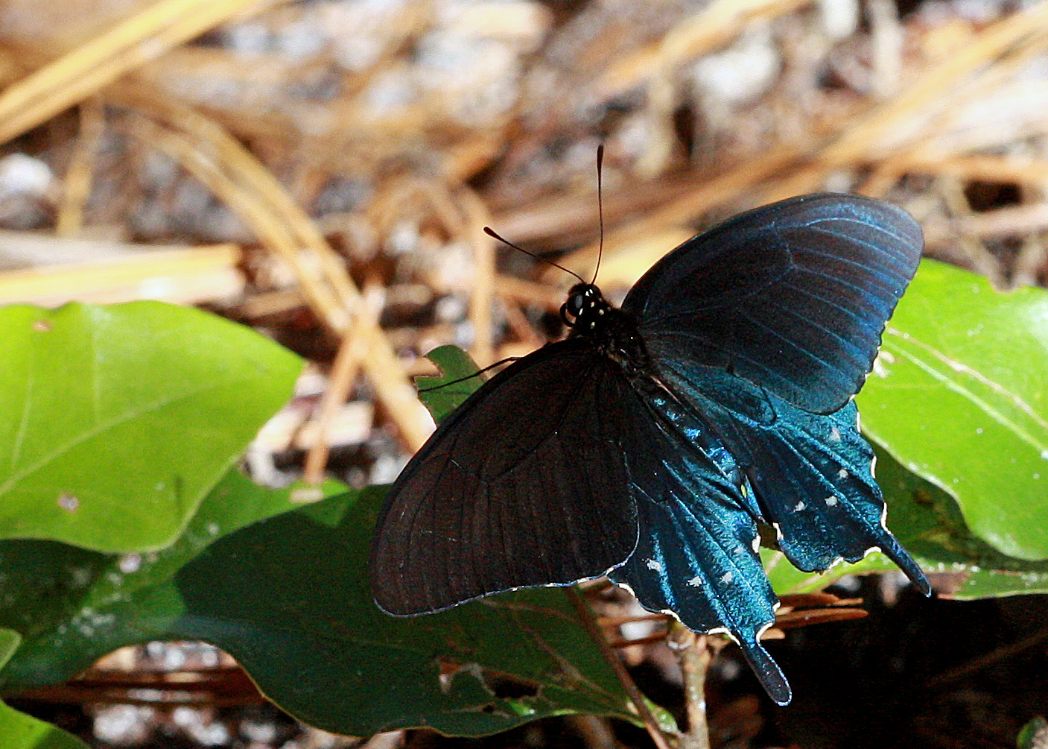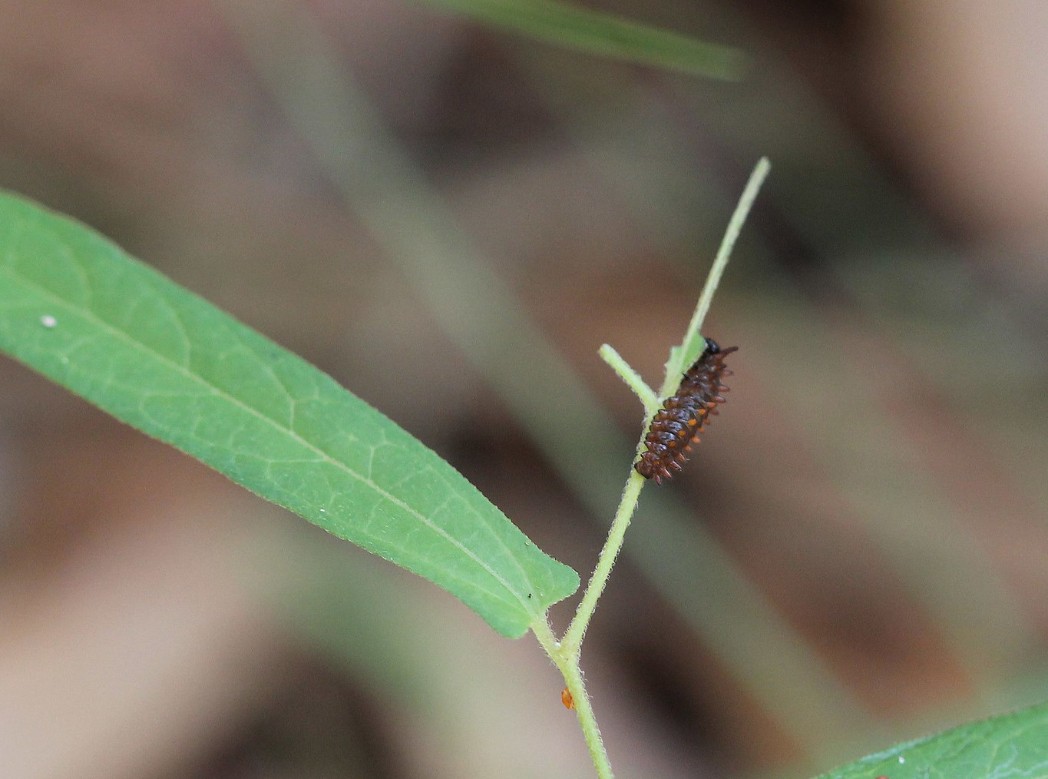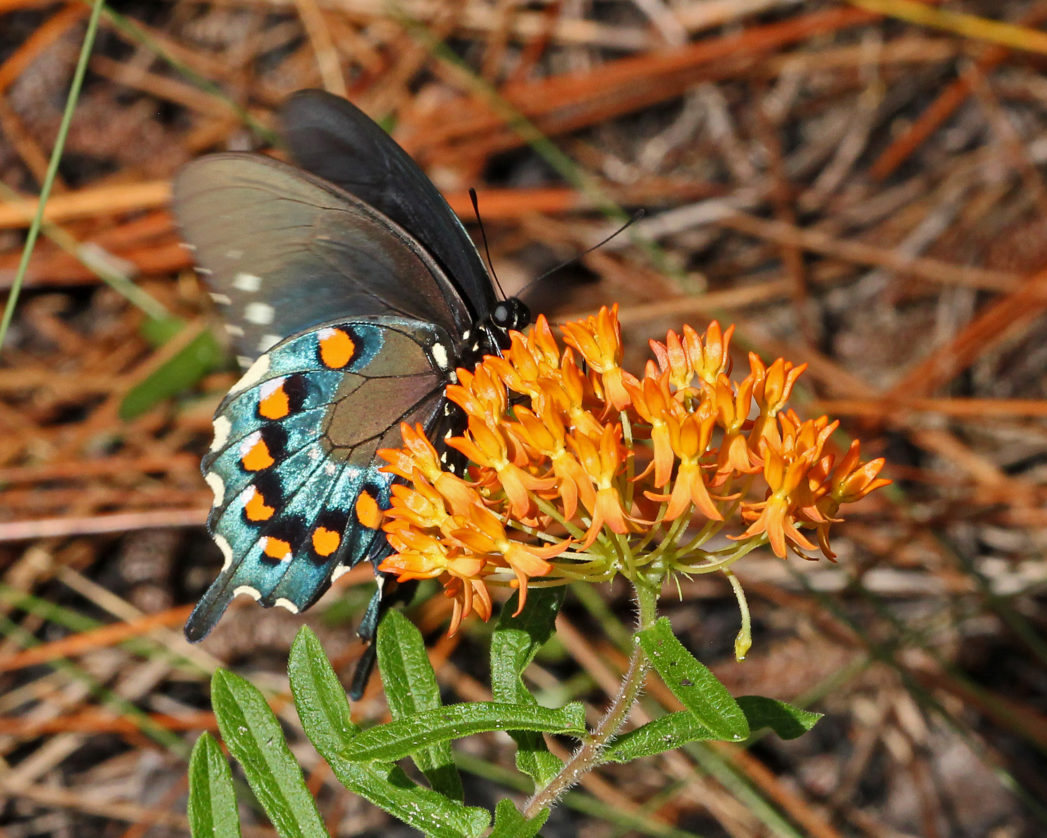Pipevine swallowtail
“Know your native pollinators” is a series of articles that will help you identify and appreciate Florida’s varied pollinators, including bees, wasps, butterflies, moths, beetles, flies, birds and bats. Pictured above: Pipevine swallowtail butterfly (Battus philenor) on Butterfly milkweed (Asclepias tuberosa) by Mary Keim.
The Pipevine swallowtail’s lovely blue hindwings inspired its other common name, the Blue swallowtail.
CLASSIFICATION
Class: Insecta
Order: Lepidoptera
Family: Papilionidae
Genus species: Battus philenor
FORAGING PREFERENCES
Pipevine swallowtails rely on plants in the genus Aristolochia as their host plants. Plants in this genus are commonly called pipevines since flowers of some species resemble tobacco pipes. Native Aristolochia species found in Florida include Virginia snakeroot (A. serpentaria), Woolly Dutchman’s pipe (A. tomentosa) and Marsh’s Dutchman’s pipe (A. pentandra).
The non-native Elegant Dutchman’s pipe (A. elegans), also known as calico flower, is dangerous to Pipevine swallowtail larvae. While the plant is attractive, it is distasteful to the larvae who will die of starvation rather than eat it. Plants in the native Florida genus Smilax can also be a threat to these butterflies. The leaves have a similar shape to pipevines, and female butterflies can confuse the two when laying their eggs. Caterpillars on Smilax plants will not survive.
Pipevine plants contain aristolochic acid. Larvae safely consume this toxin, rendering them unpalatable to some predatory birds and wasps. This toxicity will stay in the Pipevine swallowtail’s system through adulthood. The butterflies’ resilient bodies are often intact when spit out by a bird. Other butterflies, trying to look distasteful to predators, mimic the Pipevine swallowtail. These imitators include the Spicebush swallowtail and the Eastern black swallowtail.
Pipevine swallowtails nectar on many flowers. Some of their favorites are Purple thistle (Cirsium horridulum), Swamp milkweed (Asclepias incarnata), Giant ironweed (Vernonia gigantea) and Wild blue phlox (Phlox divaricata).

Pipevine swallowtail with wings open. Photo by Mary Keim.
IDENTIFICATION
These charming butterflies are mostly black with iridescent blue on their dorsal hindwing that is more prominent among males. Also on the hindwing is a row of white dots along its edge. When the wings are closed, the hindwing displays seven orange spots surrounded by blue and highlighted with white markings.
The Pipevine swallowtail’s wingspan is 7–13cm. In addition to the coloration, this butterfly can be distinguished by its slow erratic and flight.
FUN FACT
The genus Battus derives from Battus I, the founder of the Greek colony Cyrenaica in Africa. The species epithet comes from the Greek word “philandros” meaning conjugal, or fond of husband.
HABITAT
The Pipevine swallowtail spans from southern Connecticut to Central Florida, west to Arizona and south into Mexico. There is an isolated population in California. They also have been found in Southwestern Ontario, out of their native range, likely because their host plants, specifically Aristolochia macrophylla, are planted as ornamentals.
The Pipevine swallowtail frequents sunlit meadows, grasslands, fields and backyard gardens.

Pipevine swallowtail larva on Aristolochia serpentaria. Photo by Mary Keim.
LIFE CYCLE
Eggs are reddish-orange. They may be laid singly or in a limited amount on small vines and sizeable clusters on larger vines. The amount laid is in proportion to the vine size. Young larvae have short orange tubercles that will grow longer and have a glossy look. The mature larva can be solid black with two rows of yellow dots or bright red with spiny growths all over. They are covered in tiny hairs, giving their appearance a velvety texture. Young caterpillars are gregarious, but get more solitary as they grow older.
The pupa is light brown or green with darker veins. The chrysalis looks much like a dead leaf to the untrained eye — and hopefully to unsuspecting predators as well. The pupa stage lasts 10–20 days. Upon emerging, adults will live from 6 to 14 days. They can be found in flight during spring and summer.
References:
- Butterflies at Home. “Pipevine Swallowtail Butterfly (Battus philenor).” 2020.
- Butterfly Identification. “Pipevine Swallowtail (Battus philenor).” 2020.
- Hall, Donald. “common name: pipevine swallowtail, blue swallowtail, scientific name: Battus philenor (Linnaeus 1771) (Insecta: Lepidoptera: Papilionidae: Papilioninae: Troidini)” University of Florida. Pub. February 2017. Rev. March 2020.

